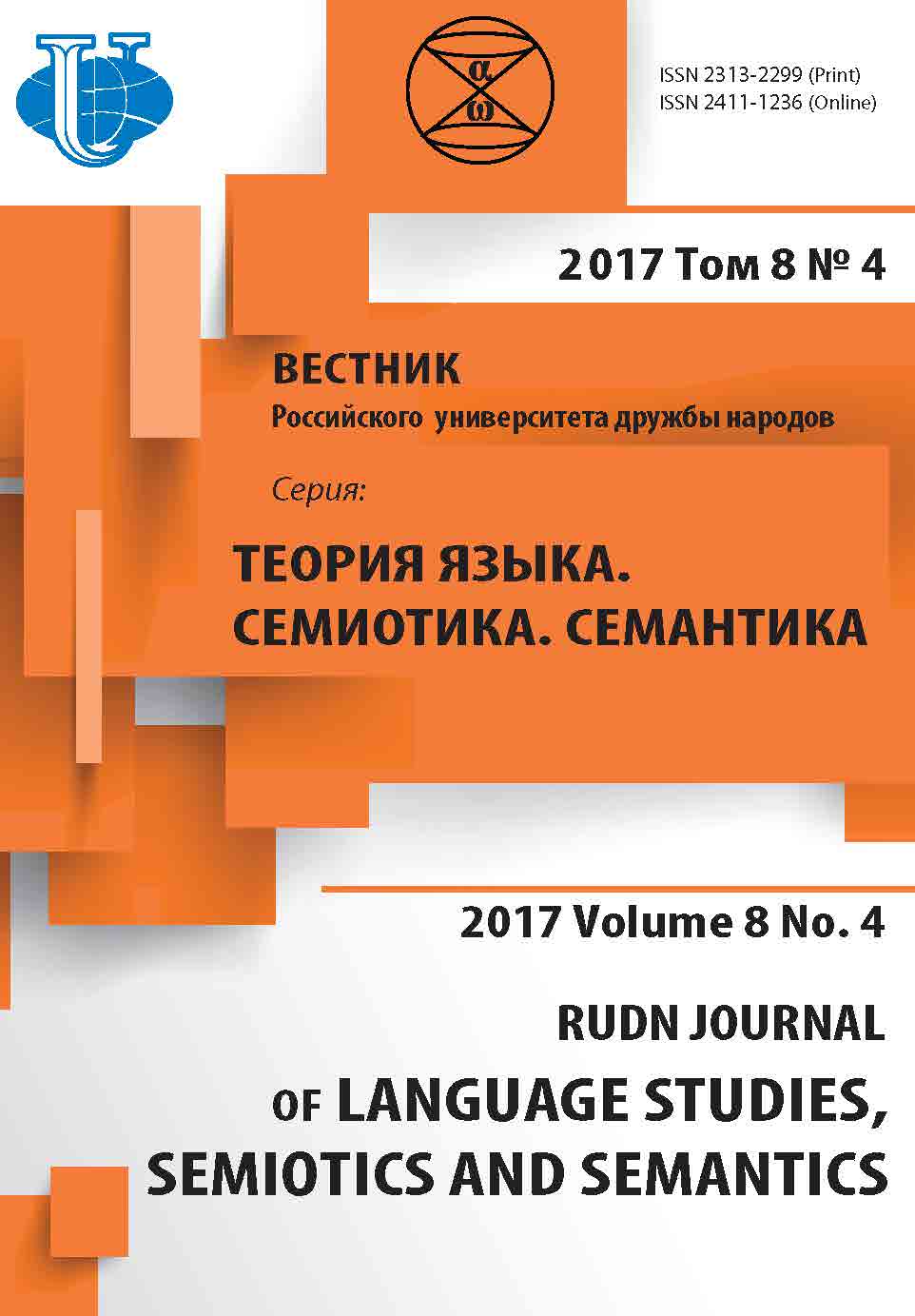ORIGINAL AND TRANSLATED FILM TITLES AS SPECIFIC NAMING UNITS
- Authors: Aleksandrova O.I1
-
Affiliations:
- Peoples’ Friendship University of Russia (RUDN University)
- Issue: Vol 8, No 4 (2017)
- Pages: 1191-1199
- Section: Articles
- URL: https://journals.rudn.ru/semiotics-semantics/article/view/17997
- DOI: https://doi.org/10.22363/2313-2299-2017-8-4-1191-1199
Cite item
Full Text
Abstract
The article discusses a problem of film naming and focuses on the film title as a specific naming unit, that is a visual-and-semantic center of a polycode text, connecting multiple codes presented by storylines, ideological and philosophical content, genre characteristics, visuals and sound. The main features of titles as headlines are characterized by integrity and connectivity, they are implement the author's intention. The titles usually comply with the story, idea, philosophy and style of the film, reflect the content and artistic conception. They should be comprehensible, succinct, intriguing, designing as soon as they should be attractive for the target audience. Besides the nominative (nomination and identification), communicative, informative and aesthetic functions, which are common for all headlines, film titles perform the functions of anticipation and attraction, as well as advertising and pragmatic functions. Film titles become important instrument for lfilm providers, since modern cinema overlaps with commercial discourse: the movie is created not only as a piece of art, but also as a market product. Dealing with a foreign movie, film providers face new challenges since the film title should be targeted at the audience of different background. Violating one of these conditions may cause infelicity or translation fails.
Keywords
About the authors
Oksana I Aleksandrova
Peoples’ Friendship University of Russia (RUDN University)
Author for correspondence.
Email: alexandrova_oi@pfur.ru
Aleksandrova Oksana Ivanovna, PhD, Associated Professor, Associated Professor of the of General and Russian Linguistics Department of the Philological Faculty at Peoples’ Friendship University of Russia (RUDN University); scientific interests: naming, discourse analyse, lexicology, semantic
Miklukho-Maklaia str.,10-2 A, Moscow, Russia, 117198References
- Alefirenko, N.F. (2005). Outstanding Issues of Semantics. Moscow: Gnozis. (in Russ.).
- Bogdanova, O.Ju. (2009). Heading as Semantic and Composotional Part of Literary Text (as exemplified of English language): avtoref. dis.. kand. filol. nauk. Moscow. (In Russ. ).
- Vasil'eva, T.V. (2006). Cognitive mechanisms of heading composition and functions. Vestnik MGU. Ser. 19. Linguistics and Crosscultural Communication, 1. pp. 154—171. (In Russ. ).
- Garbovskij, N.K. (2004). Translation Theory. Moscow: MGU publishing group. (In Russ).
- Gorshkova, V.E. (2014) Film Title as a Unit of Translation and a Unit of Image-Sence. PN RPU L inguistics and Pedagogy Bulletin, 10. pp. 33—34. (In Russ. ).
- Karaulov, Ju.N. (1987). Russian Language and Language Identity. Moscow: Nauka. (In Russ.).
- Knysh, E.V. (1988). Films Naming as an Object under Study in Onomatology In Issues of Russian Onomatology: collection of research papers. Ju.A. Karpenko (Ed.). Kiev. pp. 106—111. ( In Russ.).
- Krylova, O.A. (2006). Linguistic Stylistics. Moscow: Vysshaja shkola. (In Russ. ).
- Milevich, I.G. (2007). Strategies of Film Titles Translation. Russkij jazyk za rubezhom, 5. pp. 65—71. (In Russ. ).
- Nahimova, E.A. (2004). About Criteria of Precedent Phenomena Recognition in Political Texts. Linguistics: Ural Linguistic Society Bulletin, 13. pp. 166—174. (In Russ. ).
- Podymova, Ju.N. (2006). Film Titles in Structural-and-Semanticand Functional-and-Pragma tic A spects: diss. kand. filol. nauk. Adyghe State University, Majkop. (In Russ.).
- Superanskaja, A.V. (1973). General Theory of Proper Name. Moscow: Nauka. (In Russ.).
- Trachenko, O.N. (1984). Stylistic Features of Heading as a Sign of Text (as exemplified of modern English short story): Dis. k.f.n. Kiev. (In Russ.).
- Hatim, B., & Mason I. (1997). The Translator as Communicator. London; New York: Routledge.
- Veleva-Borissov, A. (1993). La théorie interprétative de la traduction et les titres: thèse de doctorat. Paris: ESIT.













